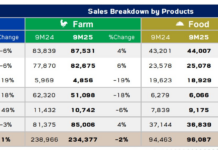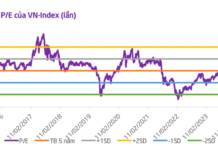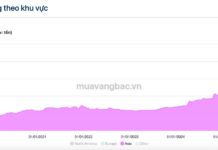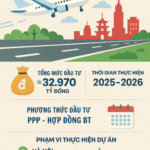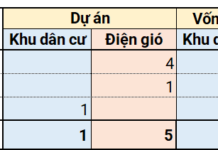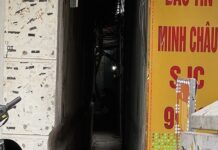Rushing to Submit Applications in a Game of Chance
Amidst the scarcity of social housing (SH) and soaring prices of commercial properties, with new projects reaching up to hundreds of millions VND per square meter, recent months have seen a surge in residents flocking to submit applications for SH in Hanoi. Some even stay up all night to “secure a spot.”
This situation once again exposes the severe supply-demand imbalance in the affordable housing segment and the inefficiencies in the application processing system.
For instance, the Uy Nỗ SH project (466 units) attracted a large crowd of applicants from the very beginning. Many reported arriving as early as 2–4 AM to secure their place in line.
According to the developer, the application submission period for the Uy Nỗ SH project extends until November 25, with an expected 2,000 applications. With only 466 units available for rent-to-own, the odds are approximately 1 in 5.
Similarly, the Rice City Long Châu project in Bồ Đề district, which adopted an online application system to reduce crowding, faced continuous system overloads and crashes. These challenges left many applicants frustrated and unable to complete their submissions.

Over 1,300 people participated in a lottery for a chance to own 149 units at the NHS Trung Văn SH project. This scenario is expected to recur as more SH projects finalize their application reviews.
Previously, in May 2023, over 1,300 people entered a lottery for 149 units at the NHS Trung Văn SH project at the former Cầu Giấy District Stadium, with odds of nearly 1 in 9…
Many argue that this situation leads to inefficiency and overwhelming workloads for all parties involved. For example, processing thousands of applications, which require income and housing status verification, overburdens local authorities at the ward level and puts immense pressure on developers during the screening process.
A representative from a company developing an SH project in Hanoi shared that developers also face significant stress during each sales launch due to the overwhelming number of applications and limited staff.
“A project with only a few hundred units often receives 5–10 times more applications. Even with increased staff, handling such volumes remains challenging. The pressure extends to local authorities responsible for verifying housing and income conditions for thousands of applicants,” they explained.
Expanding Affordable Housing Supply and Stabilization Funds
Experts suggest that a combination of solutions is necessary to address this issue effectively.
In an interview with Tiền Phong, Mr. Nguyễn Anh Quê, a member of the Vietnam Real Estate Association’s Executive Board, noted that due to various obstacles, SH projects in central and suburban areas eligible for sale are limited, while demand remains high.

Experts emphasize that resolving the “lottery-based” SH purchasing issue requires a multifaceted approach.
Mr. Quê proposed that developers should cap the number of applications accepted, such as limiting submissions to 1,000–1,500 for a 500-unit project. This ensures fairness, reduces workload and costs for developers, and maintains opportunities for applicants in upcoming projects.
“Developers should not be obligated to accept every application, especially when volumes reach tens of thousands. Setting reasonable limits ensures competitiveness without violating regulations,” Mr. Quê stated.
He also stressed the need to significantly increase SH supply and expedite approvals for stalled projects to meet the urgent housing needs of low-income earners.
Dr. Trần Xuân Lượng, Deputy Director of the Real Estate Market Assessment Research Institute, suggested both short-term and long-term solutions to alleviate the issue of thousands competing for SH applications.
In the short term, Dr. Lượng proposed establishing a housing fund for the middle class—individuals with stable incomes and employment. “The middle class struggles to afford commercial housing but often doesn’t qualify for SH. A ‘stabilization housing fund’ would redirect their demand, easing pressure on SH,” he analyzed.
Long-term solutions, according to Dr. Lượng, involve urban planning and expanding new urban areas. He advocated for reducing central district population density by developing public transportation systems like subways and rapid buses and creating satellite cities.
“The current SH situation in Hanoi is due to limited supply, central locations, and high price disparities with commercial housing. In contrast, many provinces have surplus SH with low demand. Effective planning and improved connectivity will naturally balance population distribution, eliminating the need for application queues or lotteries,” Dr. Trần Xuân Lượng concluded.
Exclusive Amenities: Why Sun Group Bai Chay Condos Are a Magnet for Investors
Instead of the hassle of searching for accommodations every holiday, more and more people are opting to invest in multi-amenity apartments in Bai Chay (Quang Ninh). These properties offer the perfect blend of a second home for relaxation and a lucrative rental opportunity, thanks to the year-round appeal of this vibrant destination.











